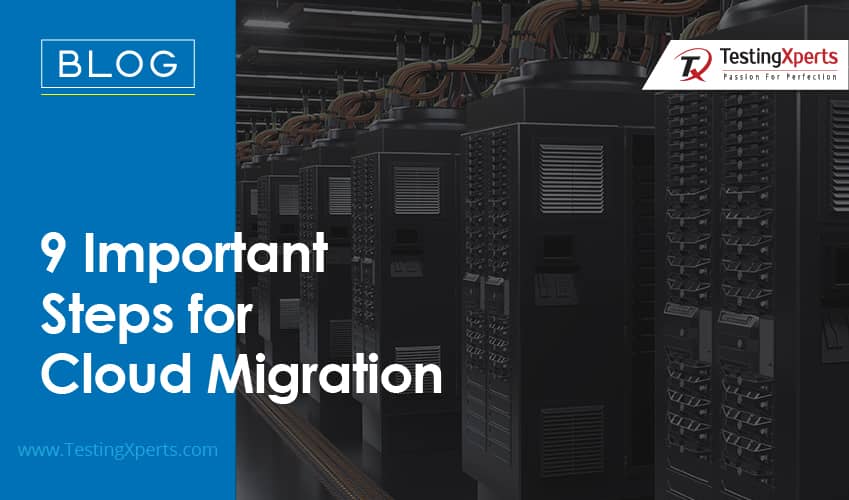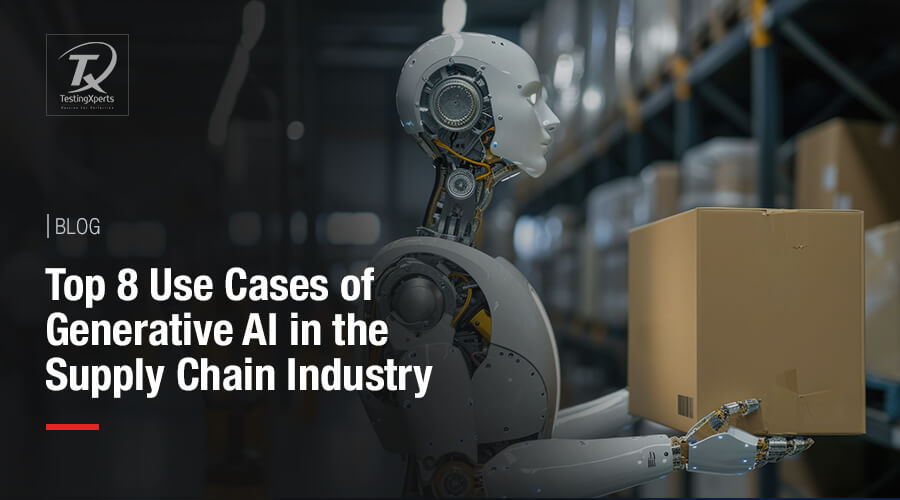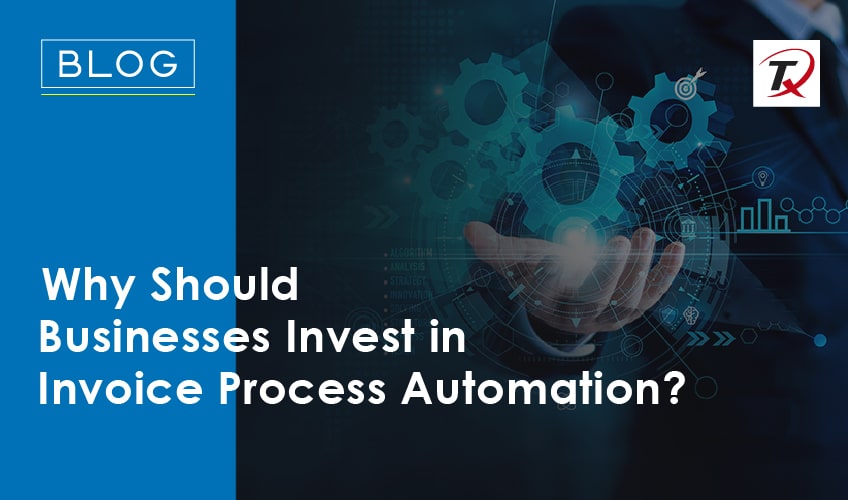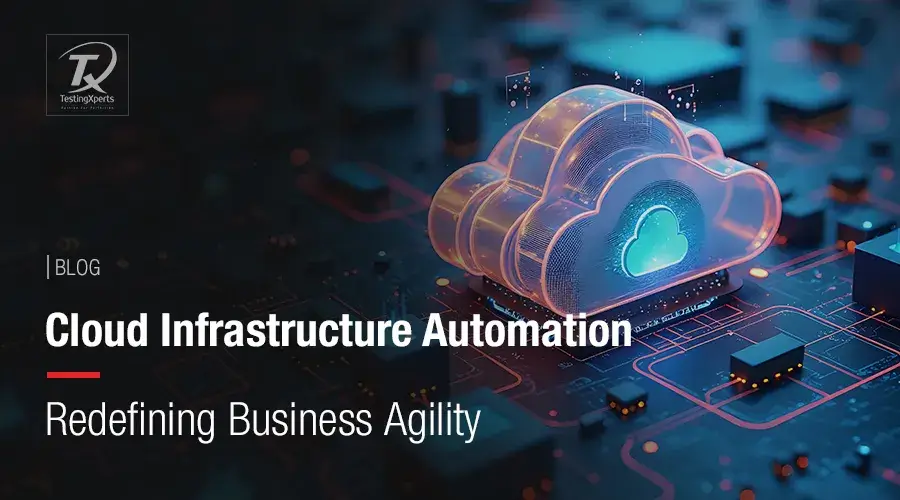
- Understanding Cloud Infrastructure Automation
- Why Business Agility Matters in the Cloud Era
- Challenges and Considerations in Implementing Cloud Infrastructure Automation
- Emerging Technologies Shaping Cloud Infrastructure Automation
- Conclusion
“The greatest benefit of automation is the ability to free up human potential and allow businesses to be more agile and innovative in a fast-evolving digital world.” – Anonymous
In the transforming digital market, cloud infrastructure is a strategic necessity redefining how businesses operate and compete in the modern world. As per the recent Gartner report, 90% of enterprises that fail to leverage cloud infrastructure automation will experience operational inefficiencies and increased downtime. This striking statistic underlines the increasing importance of automation in today’s cloud driven ecosystem.
With businesses shifting towards digital-first models, automation within cloud infrastructure plays a key role in increasing scalability, improving agility, and driving operational efficiency. The ability to optimize, manage, and scale infrastructure has dynamically become a cornerstone of success, specifically in industries where constant innovation and adaptability are critical. In this blog, we talk about how cloud infrastructure automation is redefining business agility, focusing on the benefits, challenges, and specific technologies that are shaping the future.
Understanding Cloud Infrastructure Automation
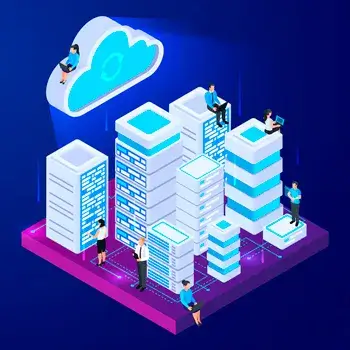
Before diving into how it encourages agility, it is important to understand what cloud infrastructure automation actually is. In simple words, it is the use of automation tools and scripts to optimize and manage cloud resources like servers, networks, databases, and storage. Automation takes over time-consuming, repetitive tasks, like provisioning, monitoring, configuration management, and scaling, permitting IT teams to pay attention to more strategic objectives. However, the choice of tools play a key role in this. For instance: Terraform allows to deploy anything on the cloud, Cloud Formation is compatible with AWS and Azure Arm works for Azure only. Hence, depending on the business model and goal, the choice of cloud automation tool has the power to make a difference.
While manual processes are about inefficiencies and errors, automation is an important thing to consider. By automating cloud infrastructure, businesses can eliminate these human errors, and create an agile environment where resources are managed intelligently and well allocated. This transformation leads to scalable and more responsive operations, which is important for maintaining competitive advantage in the evolving markets.
Why Business Agility Matters in the Cloud Era

In a hyper competitive market, business agility is a critical differentiator. Agility helps companies to respond quickly to market demands, scale operations efficiently, and pivot in real-time as customer expectations grow. Traditionally, achieving this level of responsiveness requires specific manual intervention and coordination between operations, development and business teams.
Cloud infrastructure automation changes this paradigm with on-demand scalability and the ability to provision resources automatically as a response to real-time needs. Businesses can now scale up or down seamlessly ensuring optimal resource allocation without over provisioning or downtime. This flexibility is a game-changer, mainly for industries like fintech, eCommerce, and SaaS, where unrequired spikes in demand can either make or break customer experiences.
A recent study by McKinsey & Company revealed that companies with automated cloud infrastructures experience a 60% improvement in their ability to adapt to market changes. This level of agility reduces costs and enables businesses to innovate faster, delivering new products and services to customers more rapidly.
Challenges and Considerations in Implementing Cloud Infrastructure Automation

Implementing cloud infrastructure automation has its own challenges. Businesses need to be aware of these hurdles to craft a roadmap that ensures success.
1. Skill Gaps and Training
One of the most important challenges is the lack of skilled professionals who are adept in cloud automation tools. The quick pace of technological change needs ongoing training and development to keep teams’ updated on the latest advancements.
2. Tool Integration
With a broad range of cloud automation tools available, choosing the right tools and integrating them with the existing systems can be challenging. Businesses need to ensure that their chosen solutions are aligned with their existing infrastructure to avoid any operational disruptions.
3. Governance and Control
Automation offers incredible efficiency, but businesses need to strongly implement governance controls to manage automation effectively. Without complete oversight, automation may lead to unintended results, like misallocation of resources or security vulnerabilities.
4. Initial Setup Costs
While automation leads to cost savings, the initial investment in automation tools and cloud infrastructure can be huge. Businesses should balance the upfront costs with the long-term benefits to develop a cost-effective strategy.
Emerging Technologies Shaping Cloud Infrastructure Automation

Multiple cutting-edge technologies are driving the next wave of innovation in cloud infrastructure automation. Understanding these technologies can help businesses stay ahead of the curve and increase their agility even further.
1. AI and Machine Learning
Artificial Intelligence (AI) and Machine Learning (ML) are becoming important to cloud automation, permitting businesses to optimize resources, usage patterns, and automate complex tasks. For instance: AI-driven automation can adjust infrastructure proactively based on predictive analytics, reducing downtime and improving performance.
2. Infrastructure as Code (IaC)
Infrastructure as Code is a key enabler of cloud automation, permitting IT teams to provision and manage infrastructure using code. Different tools like AWS CloudFormation and Terraform enable businesses to define their infrastructure in a scalable and agile way, eradicating the need for manual configuration.
3. Serverless Architectures
Serverless computing is another emerging trend complementing cloud automation by abstracting infrastructure management completely. Using the serverless architectures, businesses can pay attention on writing code while cloud provider handles scaling and provisioning automatically.
4. Containerization and Kubernetes
Multiple tools like Kubernetes and Docker help businesses to automate the deployment and management of containerized applications. Containers make sure consistency across different environments to automate infrastructure and reduce deployment times.
Why Choose Tx for Cloud Infrastructure Automation

Tx offers tailored solutions that help enhance operational efficiency and business agility. Our team of professionals leverage cutting-edge automation tools and best practices to help businesses reduce costs, optimize their cloud infrastructure, and improve scalability.
Here’s why Tx can be your go-to partner for cloud infrastructure automation:
Expertise in Leading Automation Tools:
With experience in tools like Kubernetes, Terraform, and AWS CloudFormation, Tx ensures that your cloud infrastructure is managed effectively and efficiently.
Tailored Solutions for Your Business Needs:
We know that every business is unique, and Tx offers customized automation strategies that align with your goals, delivering maximum ROI.
End-to-End Automation Services:
From strategy formation to tool selection, to implementation and support, Tx offers a comprehensive range of services that simplify your cloud automation journey.
Proven Track Record:
We have successfully delivered exclusive results using our experience and expertise, demonstrating our ability to deliver secure and scalable cloud automation solutions that redefine business agility.
Conclusion
Cloud infrastructure automation is a fundamental shift in how businesses operate and scale in a continuously evolving digital landscape. By automating cloud processes, businesses can reduce costs, enhance agility, and deliver faster and more innovative solutions to the market. However, the path to successful automation needs the right tools, strategic foresight and expertise.
Discover more
Get in Touch
Stay Updated
Subscribe for more info


